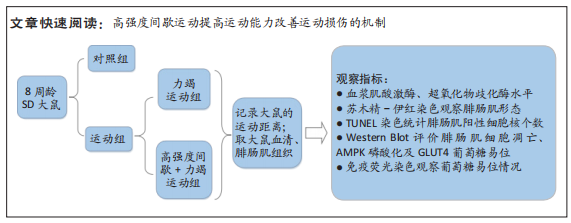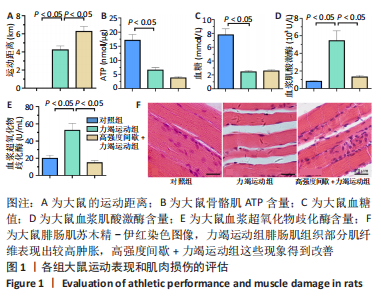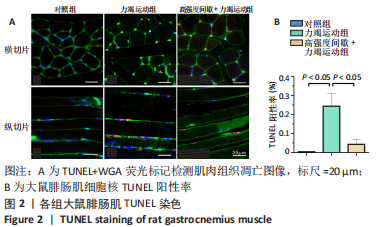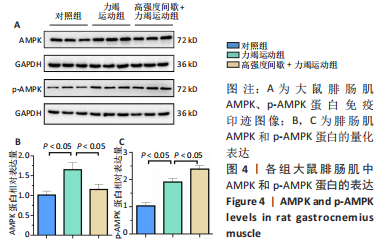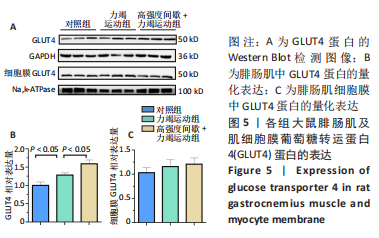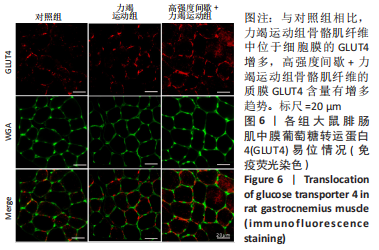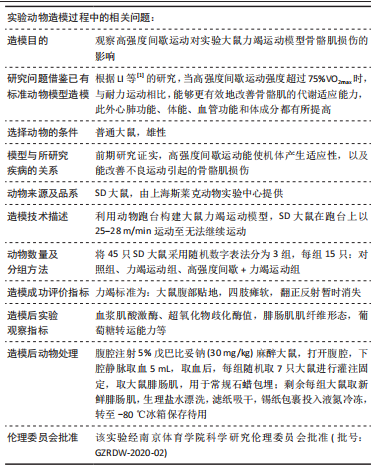[1] LI J, LI Y, ATAKAN MM, et al. The Molecular Adaptive Responses of Skeletal Muscle to High-Intensity Exercise/Training and Hypoxia. Antioxidants. 2020;9(8):656.
[2] ADDIS P, SHECTERLE LM, ST CYR JA. Cellular Protection During Oxidative Stress: A Potential Role for D-ribose and Antioxidants. J Diet Suppl. 2012;9(3):178-182.
[3] WILBER RL, STRAY-GUNDERSEN J, LEVINE BD. Effect of Hypoxic “Dose” on Physiological Responses and Sea-Level Performance. Med Sci Sports Exerc. 2007;39(9):1590-1599.
[4] FEBBRAIO MA, HISCOCK N, SACCHETTI M, et al. Interleukin-6 Is a Novel Factor Mediating Glucose Homeostasis During Skeletal Muscle Contraction. Diabetes. 2004;53(7):1643-1648.
[5] BAATI N, MOUGENOT N, LEMAITRE M, et al. Alteration of skeletal and cardiac muscles function inDBA/2J mdx mice background: a focus on high intensity interval training. Intractable Rare Dis Res. 2021;10(4):269-275.
[6] RAI S, CHOWDHURY A, RENIERS R, et al. A pilot study to assess the effect of acute exercise on brain glutathione. Free Radic Res. 2018; 52(1):57-69.
[7] 刘敬祺,苏浩,芦建东,等.业余冰球运动员一次性HIIT训练后混合饮料补充对唾液SIgA、LZM、AMS的影响[J].辽宁体育科技, 2022,44(3):69-74.
[8] THOMSON JS, ALI A, ROWLANDS DS. Leucine-protein supplemented recovery feeding enhances subsequent cycling performance in well-trained men. Appl Physiol Nutr Metab. 2011;36(2):242-253.
[9] RAHIMI M, SHEKARFOROUSH S, ASGARI AR, et al. The effect of high intensity interval training on cardioprotection against ischemia-reperfusion injury in wistar rats. EXCLI J. 2015;14:237-246.
[10] 石海燕,杨珂,文安.6周HIIT对男大学生心肺耐力与身体成分影响的研究[J].福建体育科技,2020,39(2):33-35.
[11] 纪天一,邱俊强.高强度间歇训练对静坐少动女大学生心肺耐力的影响[J].中国学校卫生,2020,41(8):1220-1223.
[12] GORZI A, RAHMANI A, MOHAMMADI Z, et al. Effects of different lengths of high-intensity interval training microcycles on the systemic and hippocampal inflammatory state and antioxidant balance of immature rats. Mol Biol Rep. 2021;48(6):5003-5011.
[13] OLÁH A, NÉMETH BT, MÁTYÁS C, et al. Cardiac effects of acute exhaustive exercise in a rat model. Int J Cardiol. 2015;182:258-266.
[14] LUNDSGAARD A, FRITZEN AM, KIENS B. The Importance of Fatty Acids as Nutrients during Post-Exercise Recovery. Nutrients. 2020;12(2):280.
[15] BEYFUSS K, HOOD DA. A systematic review of p53 regulation of oxidative stress in skeletal muscle. Redox Rep. 2018;23(1):100-117.
[16] 曹师承,赵刚,常波,等.运动对2型糖尿病大鼠骨骼肌胰岛素信号通路PI3K/PKB磷酸化与表达的影响[J].南方医科大学学报,2010, 30(6):1217-1221.
[17] 刘霞,金其贯,罗强.运动和膳食控制对2型糖尿病大鼠脂联素- AMPK-GLUT4通路的影响[J].北京体育大学学报,2013,36(1):55-58.
[18] MARTINEZ-HUENCHULLAN SF, FOX SL, TAM CS, et al. Constant-moderate versus high-intensity interval training on heart adiponectin levels in high-fat fed mice: a preventive and treatment approach. Arch Physiol Biochem. 2020:1-5.doi: 10.1080/13813455.2020.1797098.
[19] HOLLOSZY JO. Regulation of mitochondrial biogenesis and GLUT4 expression by exercise. Compr Physiol. 2011;1(2):921.
[20] 王世强,吕万刚,常芸,等.马拉松运动对心脏的影响:生理适应和潜在风险[J].中国体育科技,2020,56(6):9-21.
[21] HUNG B, SUN C, CHANG N, et al. Effects of Different Kinesio-Taping Applications for Delayed Onset Muscle Soreness after High-Intensity Interval Training Exercise: A Randomized Controlled Trial. Evid Based Complement Alternat Med. 2021;2021:1-10.
[22] MARLEGA J, MICKIEWICZ A, FIJALKOWSKA J, et al. Exertional heat stroke in an amateur runner - Challenges in diagnostics and the role of unhealthy competition. J Sports Sci. 2020;38(22):2597-2602.
[23] 赵亭,郭黎.冲刺间歇训练研究进展[J].中国体育科技,2022,58(2): 47-54.
[24] GRANATA C, OLIVEIRA RSF, LITTLE JP, et al. Training intensity modulates changes in PGC‐1α and p53 protein content and mitochondrial respiration, but not markers of mitochondrial content in human skeletal muscle. FASEB J. 2015;30(2):959-970.
[25] ABE T, KITAOKA Y, KIKUCHI DM, et al. High-intensity interval training-induced metabolic adaptation coupled with an increase in Hif-1α and glycolytic protein expression. J Appl Physiol (1985). 2015;119(11): 1297-1302.
[26] LLOYD JM, MORRIS MG, JAKEMAN JR. Effect of Work: Rest Ratio on Cycling Performance Following Sprint Interval Training: A Randomized Control Trial. J Strength Cond Res. 2019;33(12):3263-3268.
[27] KRUSNAUSKAS R, EIMANTAS N, BARANAUSKIENE N, et al. Response to Three Weeks of Sprint Interval Training Cannot Be Explained by the Exertional Level. Medicina (Kaunas). 2020;56(8):395.
[28] 张星,李嘉,高峰.运动裨益心血管健康:从分子机制到临床应用[J].中国科学:生命科学,2022,52(2):174-189.
[29] ESER P, TRACHSEL LD, MARCIN T, et al. Short- and Long-Term Effects of High-Intensity Interval Training vs. Moderate-Intensity Continuous Training on Left Ventricular Remodeling in Patients Early After ST-Segment Elevation Myocardial Infarction-The HIIT-EARLY Randomized Controlled Trial. Front Cardiovasc Med. 2022;9:869501.
[30] ROTHSCHILD JA, ISLAM H, BISHOP DJ, et al. Factors Influencing AMPK Activation During Cycling Exercise: A Pooled Analysis and Meta-Regression. Sports Med. 2022;52(6):1273-1294.
[31] 王林佳,苏浩,梁春瑜,等.不同时长HIIT与中等强度运动后大鼠VO2max及血液心血管风险指标的变化[J].中国体育科技,2016, 52(6):81-85.
[32] KWON I, SONG W, JANG Y, et al. Elevation of hepatic autophagy and antioxidative capacity by endurance exercise is associated with suppression of apoptosis in mice. Ann Hepatol. 2020;19(1):69-78.
[33] MERLE A, JOLLET M, BRITTO FA, et al. Endurance exercise decreases protein synthesis and ER-mitochondria contacts in mice skeletal. J Appl Physiol (1985). 2019;127(5):1297-1306.
[34] SYLOW L, NIELSEN IL, KLEINERT M, et al. Rac1 governs exercise-stimulated glucose uptake in skeletal muscle through regulation of GLUT4 translocation in mice. J Physiol. 2016;594(17):4997-5008.
[35] 李雪梅,王正珍.运动与骨骼肌葡萄糖转运通路研究进展[J].北京体育大学学报,2010,33(12):72-76.
[36] CHEN S, LI A, WU J, et al. Dexmedetomidine reduces myocardial ischemia-reperfusion injury in young mice through MIF/AMPK/GLUT4 axis. BMC Anesthesiol. 2022;22(1):289.
[37] 王瑞瑶,霍梦露,李超,等.小檗碱对高糖诱导心肌细胞AMPK-AS160-GLUT4通路的调节及保护作用[J]. 中国临床保健杂志,2020, 23(2):241-246.
[38] KOH J, HANCOCK CR, HAN D, et al. AMPK and PPARβ positive feedback loop regulates endurance exercise training-mediated GLUT4 expression in skeletal muscle. Am J Physiol Endocrinol Metab. 2019; 316(5):E931-E939.
[39] WANG T, NIU Y, LIU S, et al. Exercise improves glucose uptake in murine myotubes through the AMPKα2-mediated induction of Sestrins. Biochim Biophys Acta Mol Basis Dis. 2018;1864(10):3368-3377.
[40] DEHGHAN F, HAJIAGHAALIPOUR F, YUSOF A, et al. Saffron with resistance exercise improves diabetic parameters through the GLUT4/AMPK pathway in-vitro and in-vivo. Sci Rep. 2016;6(1):189.
[41] KIDO K, ATO S, YOKOKAWA T, et al. Acute resistance exercise‐induced IGF1 expression and subsequent GLUT4 translocation. Physiol Rep. 2016;4(16):e12907.
|
